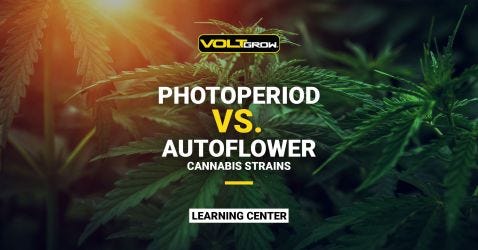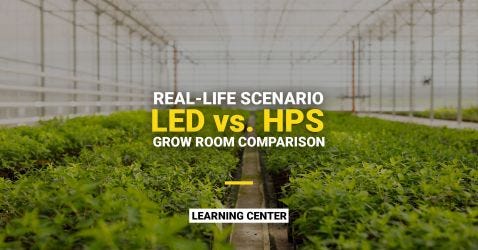
In recent years, there has been a boom in controlled environment agriculture. This has caused an increased demand for electricity that has put massive strains on the power grid. Utility companies have recognized this unprecedented power demand and started offering rebates to combat this issue and promote energy-efficient practices.
In particular, utility companies are offering rebates to cultivators who use or switch to approved LED grow lights. This is because traditional HID lights are extremely power-hungry and use much more electricity to produce the same light output that LEDs do. LED’s high efficiency is what is causing electric companies to promote their usage and implementation in indoor cultivation. However, there are specifications and guidelines to for and claim these rebates.
LED Lights Must Be Eligible
Not all LED lights will qualify for rebates. Most utility companies require them to be DesignLights Consortium (DLC) or ENERGY STAR certified, which means they have an approved level of high energy efficiency. In order to be DLC listed, a grow light needs to have a minimum efficacy of 1.9 umol/J. Both VOLT Grow®’s FL-1 and VL-1 LED Grow Lights are DLC listed and surpass that minimum requirement with an efficacy of 2.8 umol/J.
Pre-Approval Is Required Before Purchasing

It is also important to note that you must apply for your rebate prior to purchasing LED grow lights. The lights need to be approved before purchase to ensure they qualify and determine the applicable rebates. Every utility company determines its rebate programs, so it is important to contact your utility company directly to see what energy efficiency rebates they offer for LEDs.
The average time it takes for a rebate request to be approved is one month, so make sure to start this process with a suitable buffer time. Additionally, to be approved for these rebates, you do not need to have a cultivation license or state legalization of the crop you are growing; the only goal of these rebates from utility companies is to reduce the electricity demand being put on their grid.
Variability In Rebates
The rebate amount and guidelines will vary depending on your specific utility company and the size of your cultivation. Areas that have denser populations and higher strains on the power grid might offer more types and higher quantity rebates for promoting energy efficiency. Depending on your local regulations, you can have anywhere from 20% to 90% of the total cost of your LED grow lights purchase refunded by your electric company. Companies can determine their rebates based on the number of fixtures being replaced, the amount of energy being saved, or as a fixed percentage of your total project.
For example, at Efficiency Vermont you can get up to $100 cashback per fixture for qualifying LEDs for indoor growing. Or at Seattle City Light you can earn $0.15 per kWh saved; therefore if you replaced 10 existing 1000W HPS fixtures with 10 720W VOLT Grow® FL-1s running 12 hours per day, you would save about $2,500 annually. Unfortunately, utility companies do not make it easy for customers to find the details on these rebates. Contact your local utility company’s customer service directly to see if you are eligible and how much you can save. If you would like assistance with this process, feel free to contact VOLT Grow® Customer Support at grow@voltlighting.com.
Cost Caps On Rebates
There is only a finite amount of money allocated to utility companies for distributing rebates, and typically they are given out on a first come first serve basis, which is why it is important to be on top of applying for your rebate. Within this limited fund, there also might be rebate caps per project depending on how large it is. For example, a utility company might have a 70% cost cap, which means they would pay the lesser of the calculated incentive or 70% of the total project cost.
In addition to rebates, you can save even more money with LEDs because of their lower operating costs and longer life spans. Check out our article “Save Money When Switching to LED Grow Lights” to find out exactly how much you can save.






